Move over barbeque sauce... The next time you make grilled meat, try serving it with this bold Thai dipping sauce known as Nam Jim Jaew. It's spicy, salty, and sour and is sure to liven up any grilled meat with awesome Thai flavor!
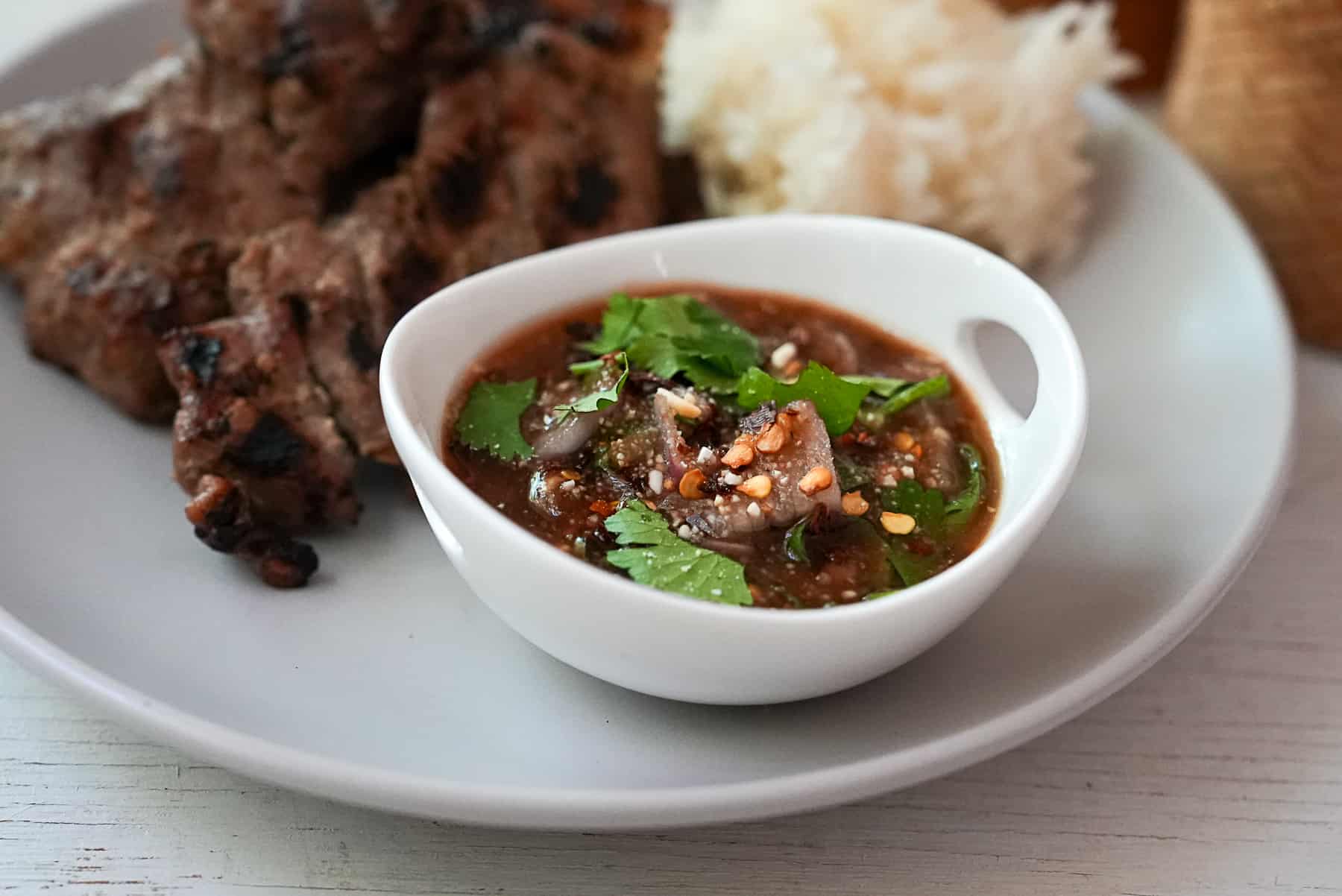
Nam Jim Jaew is a dipping sauce that's often served with grilled meats in Thailand. It originated in Northeastern Thailand (Isan), where grilled meats are a prominent part of the cuisine. However, it can now be found throughout the country. Nam jim jaew is great when served with Thai grilled chicken (gai yang), grilled pork skewers (moo ping), Thai marinated pork ribs, and grilled pork shoulder (kor moo yang) to name a few.
This dipping sauce is unique in Thai cuisine in that it's made with dried chilis rather than fresh. It's not just spice, though. It has a salty umami from fish sauce, a sour tartness from tamarind paste or lime juice, aromatic freshness from shallots and cilantro or green onions, and an amazing crunch from toasted rice powder.
Jump to:
Ingredients
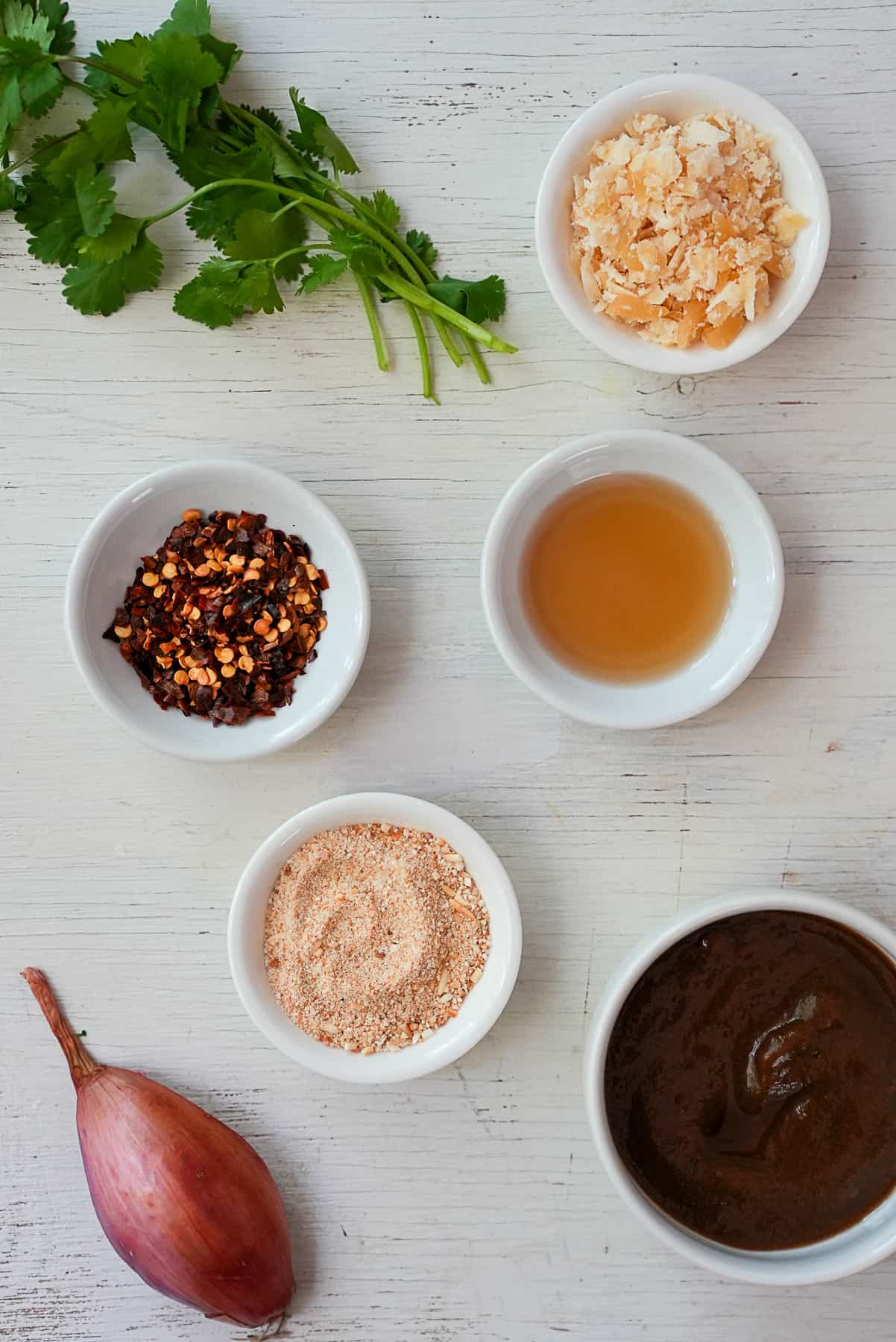
- Dried chili flakes: Known as "prik bon" in Thai, dried chili flakes add a smokey spice to this dipping sauce. You can adjust the amount depending on your spice tolerance.
- Tamarind paste: Nam jim jaew can be made with either tamarind paste or lime juice to add the sour component. I prefer the sweet tartness and thicker texture that tamarind paste provides. Instructions for how to make your own tamarind paste by squeezing a fresh tamarind block with water are below.
- Fish sauce: Fish sauce provides that salty umami flavor to help balance the sour and spicy flavors. Any good quality Thai fish sauce will work.
- Palm sugar: Palm sugar is necessary to offset the bold spicy, salty, and sour flavors. If your palm sugar is hard, you may need to microwave it with a bit of water to soften it before using. If you don't have palm sugar, granulated sugar or brown sugar will work.
- Toasted rice powder: Toasted rice powder provides a wonderful crunch and toasted flavor to the dipping sauce. See instructions below for how to make it.
- Shallots and Cilantro: Thinly sliced shallots and roughly chopped cilantro add an aromatic freshness to the dipping sauce. Sometimes green onion is used in addition to or in place of cilantro.
How to Make Tamarind Paste

Tamarind paste adds a delightfully sweet tartness to Nam Jim Jaew. It also makes the dipping sauce thicker and darker than if you were to just use lime juice. You can buy pre-made tamarind paste at Asian markets and online. However, different brands have different concentrations, so I've found it easiest to just make my own.
To make your own tamarind paste, you'll start with a block of seedless tamarind. This is fresh tamarind flesh with the seeds removed, but the strands and fibers still present. Add ½ cup of warm water to ¼ cup tamarind block. Then massage the water and tamarind together with your hands until a liquid tamarind paste forms. Strain the fibers and other particulate matter out by running it through a mesh strainer.
How to Make Toasted Rice Powder
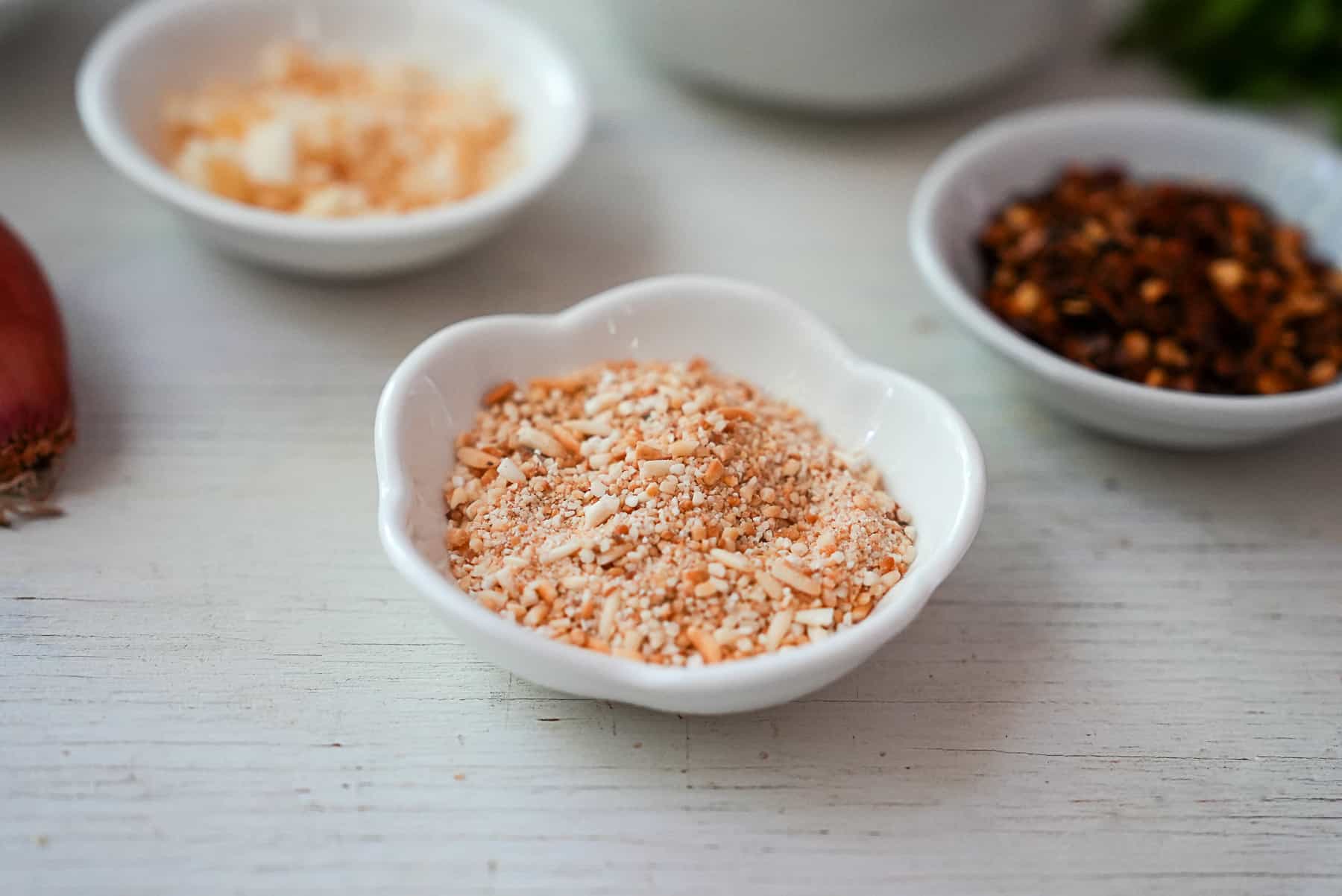
Toasted rice powder (khao khua) is another essential ingredient in Nam Jim Jaew. It provides a wonderful toasted flavor and crunchy texture, and also helps to thicken the dipping sauce. Fortunately it's very easy to make. Add raw sticky rice to a dry pan, just enough to cover the bottom. Then heat the pan over low to medium low heat, stirring occasionally, until the rice turns golden brown. Take off the heat and allow to cool. Then crush the toasted rice using a mortar and pestle, spice grinder, or coffee grinder.
Putting it All Together
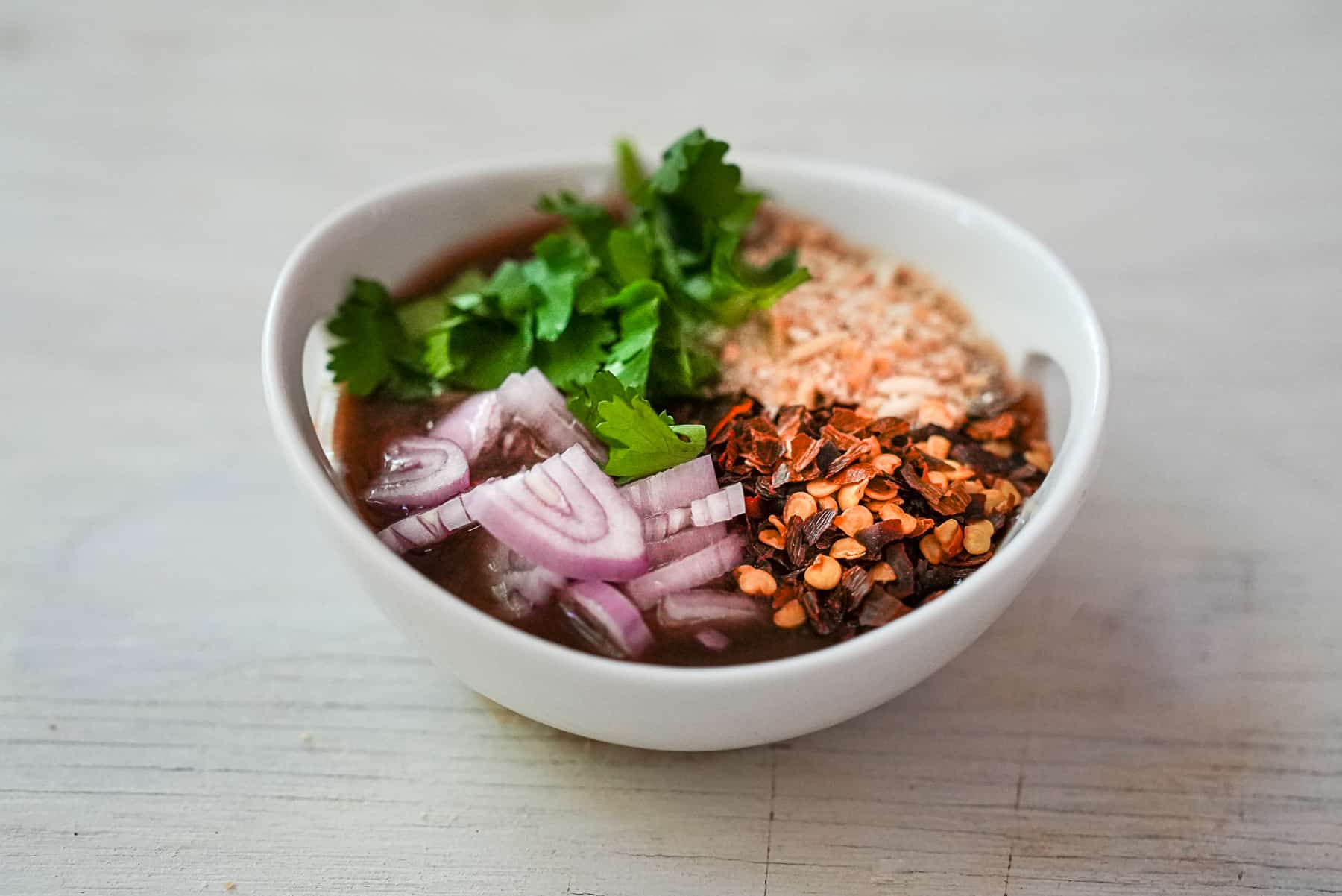
Once all of your ingredients are ready, making Nam Jim Jaew is a simple matter of mixing it all together. First, mix the tamarind paste, water, and fish sauce together. Then add the palm sugar and mix until dissolved.* Then add the dried chili flakes, toasted rice powder, shallots, and cilantro. Give it a quick stir and it's ready to serve with your choice of grilled meat!
*NOTE: If the palm sugar you are using is hard, slice it into paper-thin slivers so that it can easily dissolve into the other ingredients. Alternatively, you can add a few drops of water to the palm sugar and microwave it until it is more pliable.
Variations
There are many different ways to make Nam Jim Jaew. Some recipes call for lime juice instead of tamarind paste, or in addition to it. Other recipes call for granulated sugar instead of palm sugar. Some call for green onions instead of cilantro. Despite all of these variations, the consistent foundation of Nam Jim Jaew is the use of dried chili flakes and toasted rice powder.
Storage
Nam Jim Jaew is best eaten when fresh. If it sits for too long, the cilantro and shallots will wilt and the toasted rice powder will soak up the liquid and make the sauce too thick. Luckily, the dipping sauce is quick and easy to make, so it's not too hard to make fresh every time you'd like to eat it.
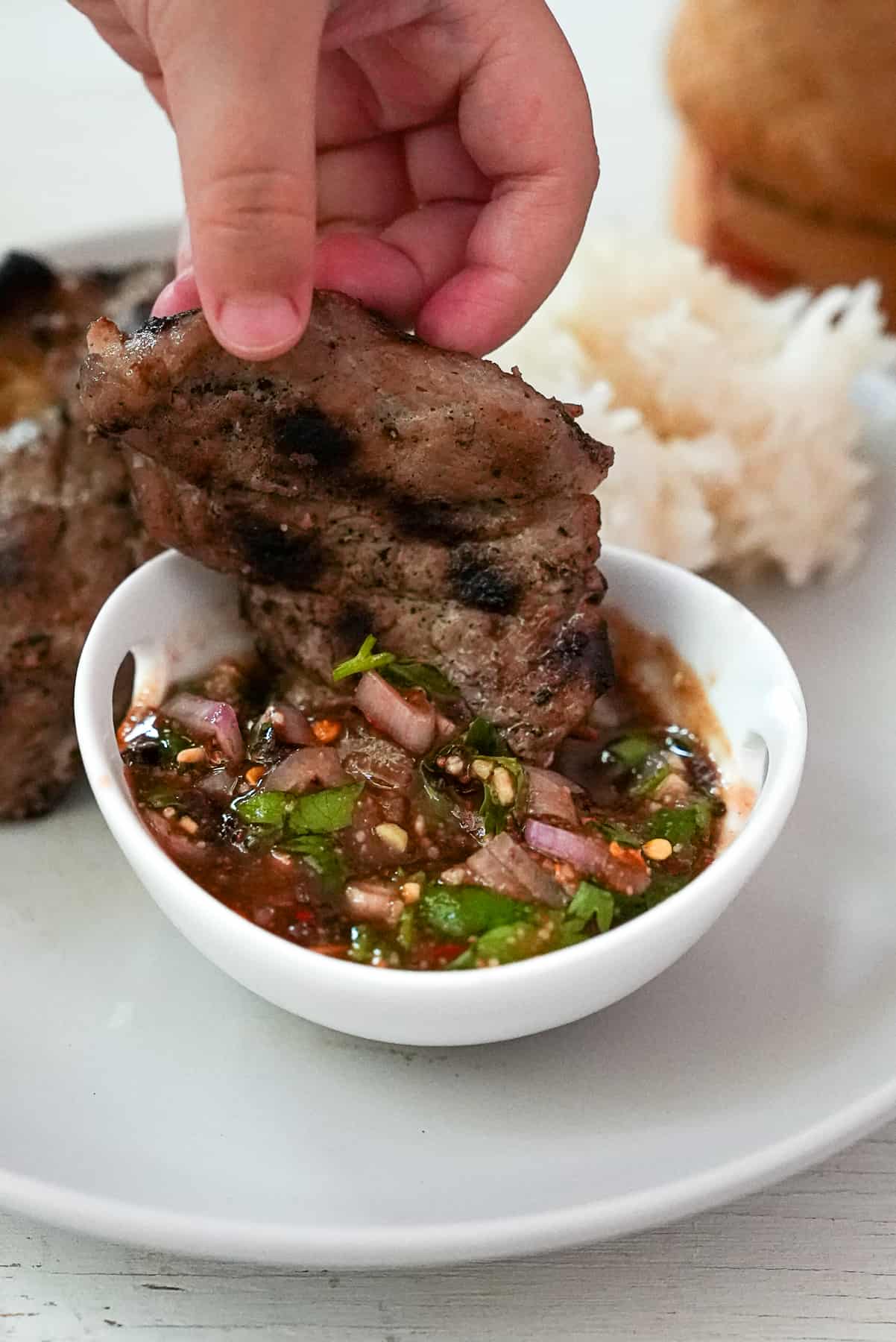
Thai Foods to Serve with Nam Jim Jaew
Nam Jim Jaew is often served with Thai grilled meats. It is offered with Thai grilled chicken (gai yang), Thai marinated pork ribs, and grilled pork shoulder (kor moo yang) to name a few. It can also be eaten with Thai grilled pork skewers (moo ping), if you like. Since Thai grilled meats are often served with sticky rice, you're likely to find Nam Jim Jaew served where sticky rice is served as well.
FAQ
Nam Jim Jaew is a Thai dipping sauce made of dried chili flakes, toasted rice powder, fish sauce, tamarind paste or lime juice, palm sugar, shallots, and cilantro. It is primarily spicy, sour, and salty. It has an amazing crunch from the toasted rice powder and wonderful smokey flavor from the dried chilis.
It depends on who you ask. In America, the Thai dipping sauce known as Nam Jim Gai (Chicken dipping sauce AKA Sweet Chili Sauce) is popular enough that it can now be found in local grocery stores. Nam Jim Satay AKA Peanut Dipping Sauce is also quite popular in the West. In Thailand, Nam Pla Prik (Fish sauce with chilis) is a seasoning sauce found ubiquitously on every table, in restaurants and in homes.
In Thai, Nam Jim is the phrase for a dipping sauce. This class of sauces are used to add flavor to other dishes. Some common Nam Jim dipping sauces are Nam Jim Talay (Seafood dipping sauce), Nam Jim Sate (Peanut dipping sauce), Nam Jim Gai (Chicken dipping sauce), and Nam Jim Jaew (Dried chili dipping sauce).
Nam Prik is the Thai phrase for a chili paste. These chili pastes are thicker than the Nam Jim dipping sauces and are all made with a variety of chili as the base. They are usually eaten as stand-alone dishes in combination with grilled meats, raw vegetables, and sticky rice. Nam Prik Ong (Pork and Tomato chili paste), Nam Prik Noom (Young Chili paste) and Nam Prik Gapi (Shrimp Paste chili dip) are some of the more common Nam Prik chili pastes.
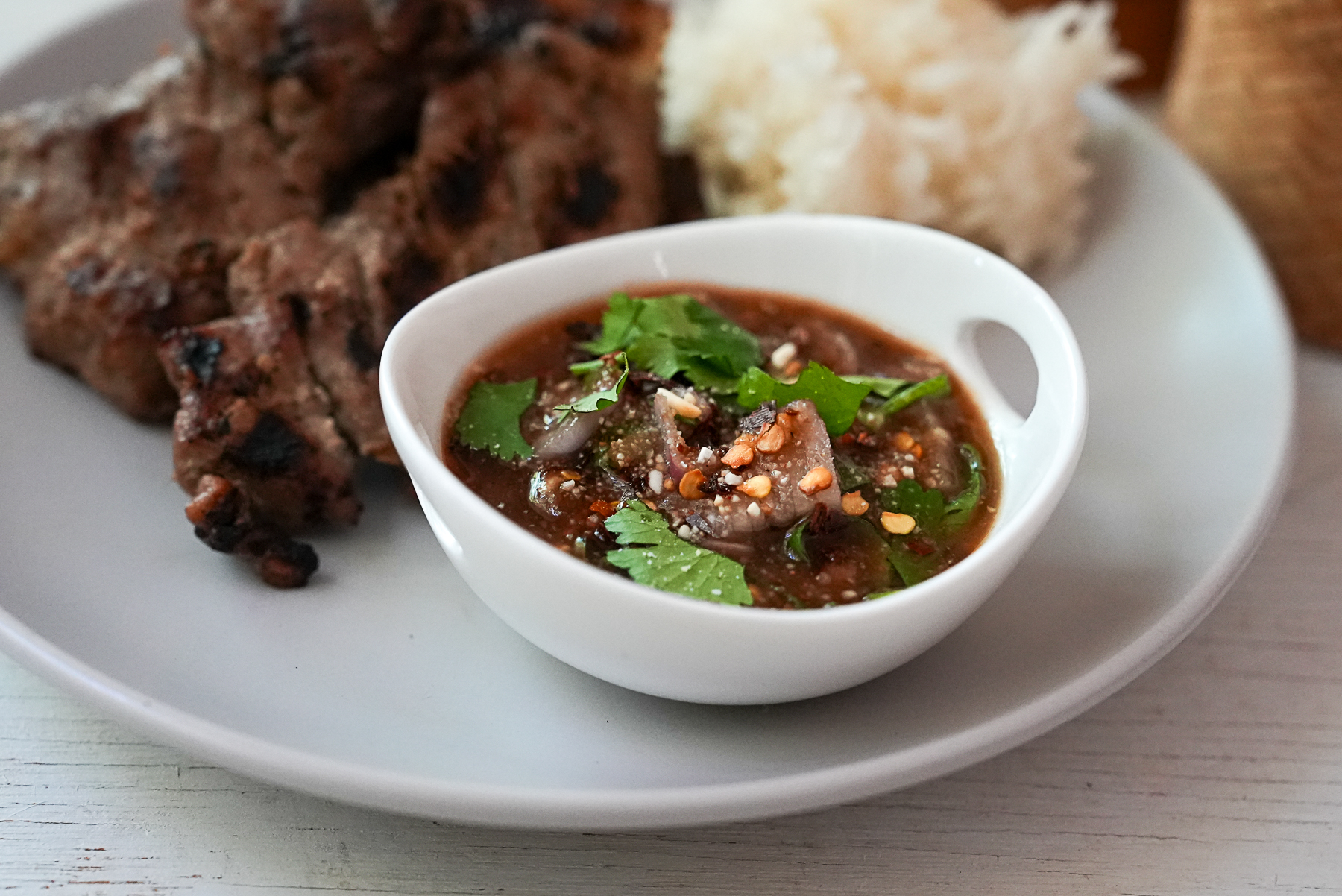
Recipe

Thai Dried Chili Dipping Sauce | Nam Jim Jaew | แจ่ว
Ingredients
- 2 Tablespoons tamarind paste
- 2 Tablespoons water
- 1 Tablespoon fish sauce
- 1 teaspoon palm sugar
- 2 Tablespoons shallots finely sliced
- 2 Tablespoons cilantro coarsely chopped
- 1 teaspoon dried chili flakes
- 1 Tablespoon toasted rice powder
Instructions
- Prepare the tamarind paste by mixing ¼ cup wet tamarind block with ½ cup water. Mash with your fingers until a thick paste is formed, then strain to remove the seeds and veins.
- Prepare the toasted rice powder by slowly toasting ¼-1/2 cup of Thai sticky rice over low heat until it is rich, golden brown in color and has a toasted aroma. Grind into a powder using a mortar and pestle or coffee/spice grinder.
- Slice the shallots into small, thin pieces and coarsely chop the cilantro.
- Mix the tamarind paste, water, fish sauce, and palm sugar in a bowl. Continue mixing until the palm sugar is completely incorporated into the liquid. Add the rest of the ingredients. Taste and adjust the flavors according to your preferences. The primary flavors should be sour, spicy, and salty.



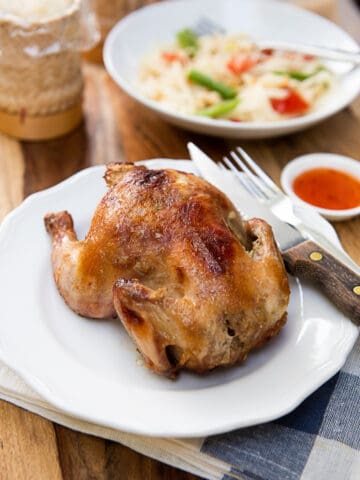
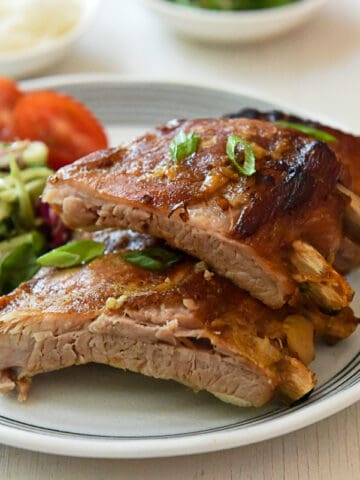
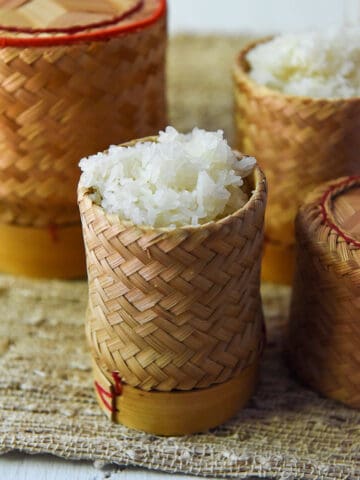
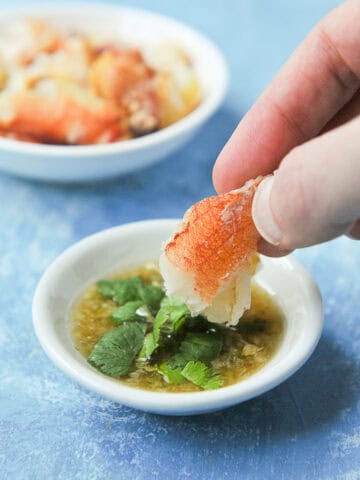
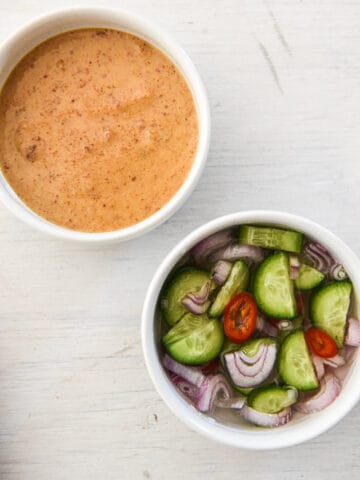
Leave a Reply